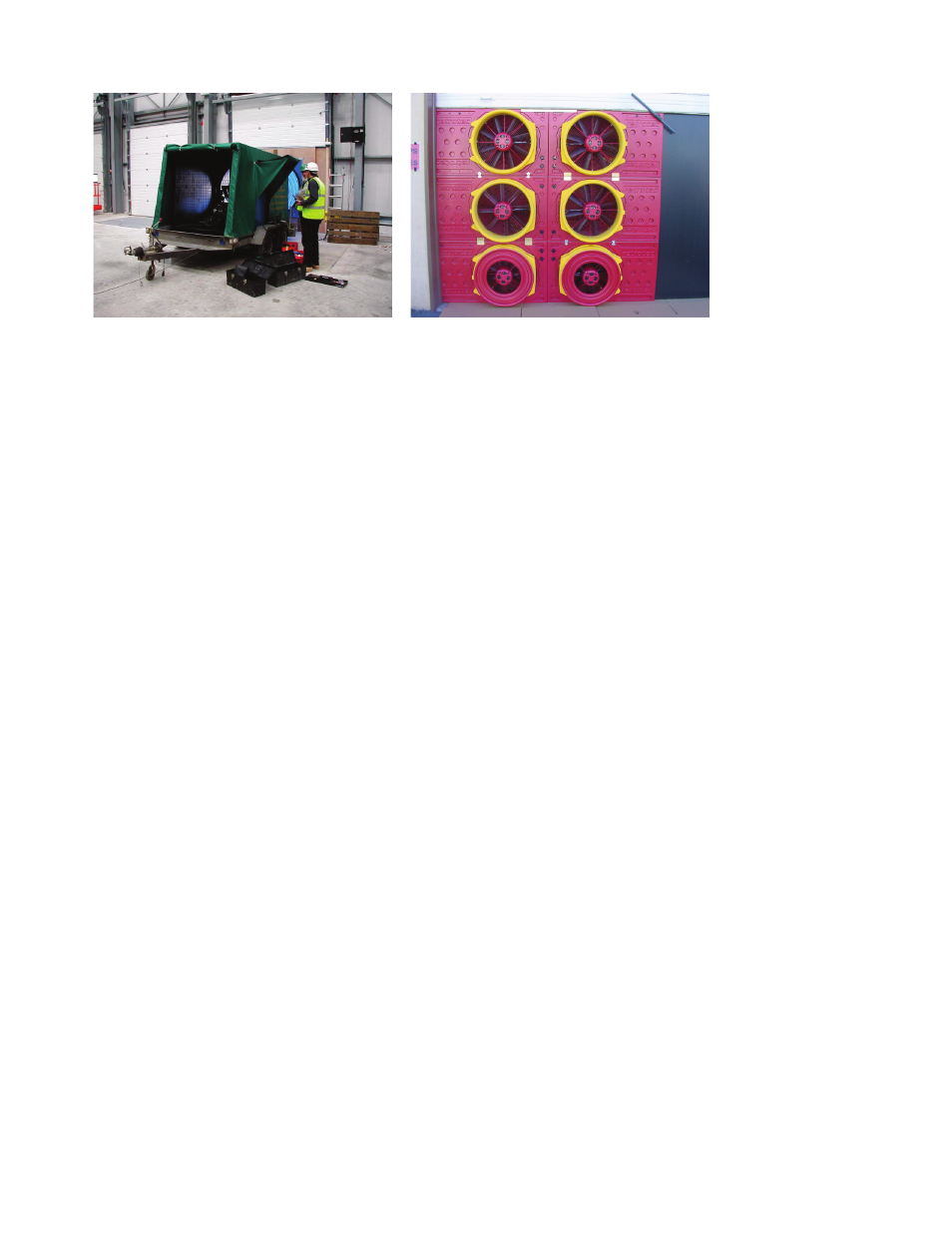Retrotec USACE User Manual
Page 307

Appendix F F13
Figure F9. Trailer mounted high power fan:
253,500 L/s (50,000 cfm) at 75 Pa. Ideal for
large warehouses.
Figure F10. Portable commercial modular door
fan: 243,360 L/s (48,000 cfm) at 75 Pa.
If the specifi cations call for an air leakage requirement that is relaxed to
a greater leakage rate for special buildings (i.e., storage facilities with over-
head coiling doors), then the testing agency should use that rate to calculate
a minimum fan capacity required for the test. This will result in the building
achieving higher pressures during the test, which will increase the reliability
and accuracy of the results. When smaller size equipment is used, it generally
requires the simultaneous operation of multiple portable fans and pressure
monitoring equipment strategically placed throughout the building.
Building HVAC systems may be used to measure envelope leakage in
some cases where a profi cient testing agency is capable of measuring air fl ows
through outdoor air and exhaust ventilation equipment using:
Pitot tube or hot wire anemometer traverse.
■
Pressure compensated shrouds (which work well on rooftop exhaust
■
units, and which are very accurate because they include air from duct
leakage as well as through grilles).
In the hands of experienced personnel, the accuracy of these methods can
be equal to or better than that of calibrated portable fan methods. However,
note that accuracies may be no better than +/-20 percent when 75 Pa was
achieved. For whole building tests on buildings with air handling systems that
have been designed to provide accurate outdoor airfl ow stations or for very
large buildings, with over 500,000 sq ft (46,450 m
2
) of envelope, this may be
the practical option. The standard CAN/CGSB-149.15, Determination of the
Overall Envelope Airtightness of Buildings by Fan Pressurization Method
Using the Building’s Air Handling Systems could be referenced and used by
the testing agency.
It may be possible to isolate and test individual fl oors for buildings in excess
of four stories, if the testing agency’s equipment is not capable of achieving a
full building uniform pressure due to the geometry of the interior partitions and
limited shaft areas. However, the fl oor-by-fl oor method requires exceptional
preparation and knowledge of airfl ow characteristics within chases, shafts, and
wall cavities, in addition to maintaining an identical or balanced pressure at the